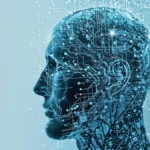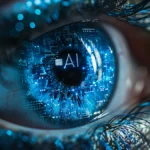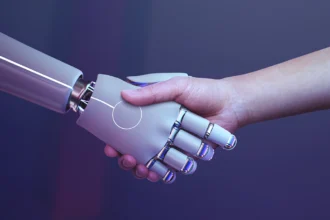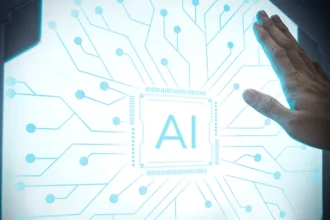Have you ever wondered how artificial intelligence (AI) is shaping our daily lives? From smart assistants like Siri and Alexa to sophisticated algorithms predicting our shopping habits, modern AI has become an integral part of our world. But with rapid advancements in technology, how do we keep up with the latest AI trends and understand the various approaches that drive this innovation? In this article, we will explore the key modern AI approaches you should know, providing insights into the technology that is transforming industries and our daily routines.
What Are Modern AI Approaches?
Modern AI approaches refer to the techniques and methodologies used to create intelligent systems that can perform tasks typically requiring human intelligence. These approaches encompass a wide range of technologies, from machine learning and deep learning to natural language processing (NLP) and computer vision. Understanding these approaches is crucial for anyone interested in technology insights, whether you’re a tech enthusiast, a business leader, or just curious about the future.
Key Modern AI Approaches
Let’s delve into some of the most significant AI approaches and their applications:
- Machine Learning (ML)
- Definition: A subset of AI that enables systems to learn from data, improve over time, and make decisions without being explicitly programmed.
- Applications: Spam detection in emails, recommendation systems (like Netflix and Amazon), and predictive maintenance in manufacturing.
- Deep Learning (DL)
- Definition: A specialized branch of machine learning that uses neural networks with multiple layers (hence “deep”) to analyze various factors of data.
- Applications: Image and speech recognition, natural language processing, and autonomous vehicles.
- Natural Language Processing (NLP)
- Definition: A field of AI that focuses on the interaction between computers and humans through natural language.
- Applications: Chatbots, language translation services (like Google Translate), and sentiment analysis.
- Computer Vision
- Definition: A field that enables computers to interpret and make decisions based on visual data from the world.
- Applications: Facial recognition systems, object detection, and medical imaging analysis.
- Reinforcement Learning
- Definition: An area of machine learning where an agent learns to make decisions by receiving rewards or penalties for actions taken in a given environment.
- Applications: Game playing (like AlphaGo), robotics, and personalized recommendations.
- Generative Adversarial Networks (GANs)
- Definition: A class of machine learning frameworks where two neural networks contest with each other to produce new, synthetic instances of data.
- Applications: Image generation, video creation, and enhancing low-resolution images.
- Transfer Learning
- Definition: A technique where a pre-trained model on one task is reused as the starting point for a model on a second task.
- Applications: Medical image diagnosis and domain adaptation in NLP.
Table: Comparison of AI Approaches
| AI Approach | Key Features | Common Applications |
|---|---|---|
| Machine Learning | Learns from data, improves over time | Spam detection, recommendation systems |
| Deep Learning | Uses neural networks with multiple layers | Image/speech recognition, autonomous driving |
| Natural Language Processing | Interacts through human language | Chatbots, translation, sentiment analysis |
| Computer Vision | Analyzes and interprets visual data | Facial recognition, object detection |
| Reinforcement Learning | Learns through rewards/penalties | Game playing, robotics |
| Generative Adversarial Networks | Generates synthetic data through competition | Image generation, video creation |
| Transfer Learning | Reuses pre-trained models | Medical diagnosis, domain adaptation |
The Importance of Ethical AI
As we explore these modern AI approaches, it’s crucial to consider the ethical implications of AI technology. The rise of AI has sparked discussions about privacy, bias, and accountability. Understanding ethical AI practices is essential for developers, businesses, and consumers to ensure that AI systems are used responsibly and equitably.
Key Ethical AI Considerations
- Bias in AI: AI systems can perpetuate existing biases in data. It’s vital to ensure diversity in datasets and algorithms to avoid discrimination.
- Transparency: Understanding how AI systems make decisions is crucial. Companies should strive for transparency in their AI processes to build trust with users.
- Privacy: With AI systems often handling sensitive data, protecting user privacy is paramount. Organizations must implement robust security measures and comply with regulations.
- Accountability: As AI systems make more decisions independently, establishing accountability for outcomes becomes critical. Clear guidelines and oversight can help manage this.
The Future of AI: Trends to Watch
As we look ahead, several trends are emerging in the AI landscape that are worth noting:
- Increased Automation: More industries will adopt AI technologies to streamline operations and enhance efficiency.
- AI in Healthcare: The healthcare sector will see significant advancements in AI applications, from diagnostics to personalized medicine.
- AI-Powered Edge Computing: Processing data closer to the source will reduce latency and improve response times for real-time applications.
- Human-AI Collaboration: The focus will shift toward collaboration between humans and AI, enhancing decision-making and productivity.
Frequently Asked Questions (FAQs)
What are the main differences between machine learning and deep learning?
Machine learning encompasses a broad range of algorithms and techniques for data analysis, while deep learning specifically refers to neural networks with multiple layers that can learn from large amounts of data.
How can businesses implement AI approaches effectively?
Businesses should start by identifying specific problems that AI can solve, invest in the right technology, and ensure that they have skilled personnel to manage AI initiatives.
What role does data play in AI?
Data is the foundation of AI. Quality, quantity, and relevance of data directly impact the performance and accuracy of AI models.
Can AI replace human jobs?
While AI may automate certain tasks, it is more likely to transform jobs, requiring new skills and collaboration between humans and machines.
What are some real-world applications of AI in everyday life?
AI is used in various applications, including virtual assistants, fraud detection, customer service chatbots, and personalized marketing.
READ MORE : Top 10 AI Apps to Simplify Your Daily Tasks
Conclusion
Understanding modern AI approaches is not just for tech experts; it’s essential for anyone wanting to navigate today’s technology-driven world. With the rapid evolution of AI, staying informed about AI trends, ethical considerations, and practical applications can empower individuals and businesses alike.
We appreciate your interest in understanding AI better. To keep up with the latest trends and insights, consider joining our community on social media, subscribing to our push notifications, and signing up for our newsletter. This way, you’ll receive instant updates and become part of a growing network of individuals keen on technology insights and advancements. Thank you for reading, and we look forward to your continued engagement with us at usatrends.us.











